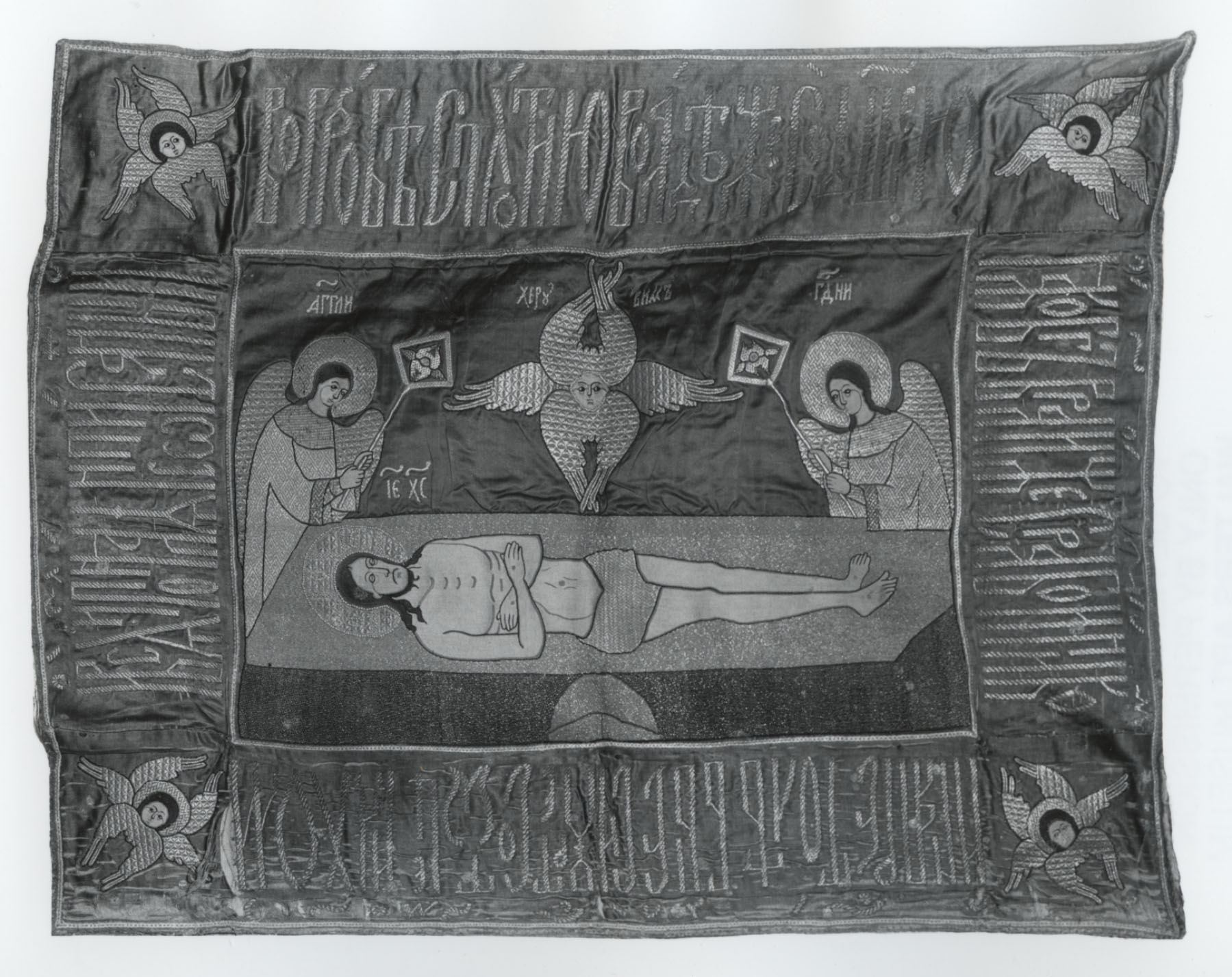Altar Cloth
(Byzantium and Early Russia)
The "plashchnitsa" (Greek "epitaphios") is an altar cloth that was brought out for special veneration on Good Friday, the feast day of the Crucifixion. At the center, the dead Christ is depicted on an altar-like table beneath a six-winged cherub. To the left and right, two "angels of the Lord" are shown with "rhipidia," or ceremonial fans usually held by deacons during the celebration of the Divine Liturgy. The inscription around the border contains verses from the Good Friday service.
Inscription
Provenance
Provenance (from the French provenir, 'to come from/forth') is the chronology of the ownership, custody, or location of a historical object. Learn more about provenance at the Walters.
Henry Walters, Baltimore [date and mode of acquisition unknown]; Walters Art Museum, 1931, by bequest.
Exhibitions
| 1988-1989 | A Millennium of Christianity: Russian Art from The Walters Art Gallery. The Walters Art Gallery, Baltimore. |
| 1959-1960 | Russian Art: Icons and Decorative Arts from the Origin to the Twentieth Century. The Walters Art Gallery, Baltimore. |
Geographies
Russia, Moscow (Place of Origin)
Measurements
H: 26 11/16 × W: 32 11/16 in. (67.8 × 83.1 cm)
Credit Line
Acquired by Henry Walters
Location in Museum
Not on view
Accession Number
In libraries, galleries, museums, and archives, an accession number is a unique identifier assigned to each object in the collection.
In libraries, galleries, museums, and archives, an accession number is a unique identifier assigned to each object in the collection.
83.275




